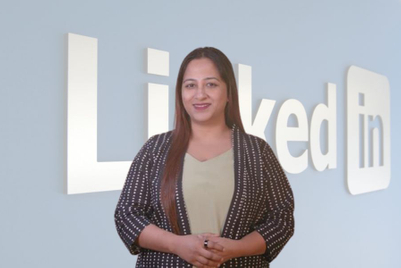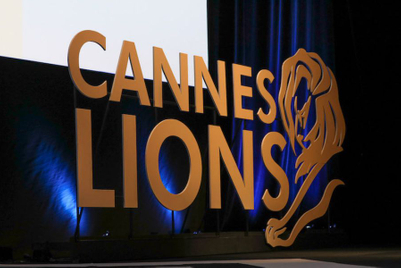
Waggener Edstrom completes 30 years of operations in 2014. Starting off as a PR agency specialising in technology, the agency has expanded to consumer, healthcare, financial services and public affairs verticals, besides launching a digital and mobile services division Studio D in 2003. Now the focus is on insight and analytics with big data being the ‘next big thing’, informs Matthew Lackie, senior vice president, Apac, Waggener Edstrom Communications.
Campaign India caught up with Lackie and Madhuri Sen, managing director, India, to find out more about the business, growth in India and Apac, challenges, and outlook for 2014.
Waggener Edstrom completes 30 years in 2014. How big is the agency today and what are the key areas of focus?
Matthew Lackie (ML): Waggener Edstrom is one of the largest independent agencies, just behind Edelman in terms of size. It employs 850 people in 18 offices globally. In Apac, we employ 150 people in 10 offices. (The agency has fully owned offices in Singapore, Hong Kong, Beijing, Shanghai, Mumbai, Delhi, and Bengaluru, besides joint ventures in Australia and South Korea.)
We have Microsoft as a client since the last 30 years. Waggener Edstrom was considered as one of the inventors of technology PR and from there on, the agency spotted the move towards digital and social and hence launched Studio D (in 2003). And now the focus is on insights and analytics; big data is the next big thing across the world. We have a huge investment in insights and analytics in terms of proprietary products.
The focus in Apac is on consumer, healthcare and technology, and these practices are underpinned by Studio D. Studio D has become an integral mix in every campaign that we design for our clients.
What would you say are the primary challenges in the Indian market? What are the challenges peculiar to the Indian market for Waggener Edstrom?
Madhuri Sen (MS): The challenges faced by Waggener Edstrom in India are no different from the challenges faced by other agencies globally. Currently, the creative landscape no longer comprises of just other PR MNC agencies, we are competing with advertising agencies that have divisions that are dealing with influencer or social media, and then there are specialist digital agencies. Marketers are not sure whether they should outsource or hire within the oragnisation. There are lots of questions that people are trying to answer. Initially, RoI was a key issue but now clients want to know which channels they must opt for, for quick connect with consumers.
Further, marketers have realised that FB likes and demographics are not the real measurement tools and that the real measurement tools lie outside in more tangible business numbers. And that’s the area that companies like Waggener Edstorm are playing very strongly in. Talent is also another industry challenge that PR agencies face currently.
ML: There are a number of challenges the industry as a whole is facing: fast-evolving, dynamic nature of client structures, budgets; changing nature of audience information consumption, opinion making and decision making patterns. Consolidation of budgets across marketing and communication disciplines is a key trend and there is a great need to be able to engage with audiences across platforms in a more consistent manner than ever before.
The Holy Grail in communications is measurement. PR agencies have struggled to show the real impact on a business. Some of our campaigns and products have been able to solve that and tell CEOs in a clear way how communications is driving the business.
How much of the business in India is globally or regionally aligned? Is that a growth opportunity in India?
ML: The business in India is 50 per cent globally/regionally aligned while the remaining 50 per cent is local business. Waggener Edstrom Apac has grown at an average of 21 per cent year on year. In 2013, our strategy was to pursue larger, multi-market, integrated communications remits. As a result, we won 13 per cent more new regional clients including two new regional wins in India. They are two global firms - Akamai (technology) and Skillsoft (online learning). When I look at all the regional RFPs that come through, around 70 per cent have India in their mix. So it’s a massive area of interest.
How much of revenues in India come from digital / analytics / social? How would you divide the different revenue buckets and how is this different from the revenue split globally?
ML: While it is hard to segment our digital work versus more traditional work since most of the campaigns we run are integrated, I would say we deliver digital or integrated services to 75 per cent of our client portfolio.
What growth are you looking at in India?
MS: I wouldn’t put a number to it. Right now we are focused on building in a manner that’s quality as opposed to having a target number. But yes, because we are fairly small and nimble, our growth targets are fairly aggressive and in double digits.
ML: Our business in India grew by 42 per cent in 2012 and by 34 per cent in 2013. I want the team to continue delivering really strong creative campaigns in the market. The talent that we have in India is super strong and the capability the team has benefits the entire Apac region.
How many people are employed in the India operations currently? How do you see this growing?
MS: Currently, the Indian operations have around 20 employees. We see the number growing to 30-plus in 2015. It may sound like we are very cautious because at this size one may probably think of growth in multiples. The biggest challenge is to find the right talent for the new propositions that we have. And we are very clear that we do not want to drop the quality of work we do.
Where is the talent coming from (what kind of agencies)?
ML: We have recently bought on board a senior creative director from an advertising agency - Abhishek Misra comes from JWT and will drive the creative team for India and will also have a bigger canvas in terms of Apac. This is the first time that we have bought on board someone from an ad agency to lead creativity. Hiring him is actually bucking the trend of getting the people that PR agencies normally hire.
We have hired someone in Apac from an analytics company who has a data science background; a designer from a branding firm; and then we hire people from other PR agencies and digital agencies. The talent is a combination of different skill sets that we bring together to develop content strategies that resonate across multiple channels.
Acquisition of non-traditional talent from advertising, media planning, and specialised digital and research industries supports growth in the newer areas as we evolve our proposition and value to clients. We also place a huge focus on retention and work-life balance. Our talent retention and employee retention rates ensure our clients have a consistent experience and we grow people for the long term.
Is positioning in the digital space an issue? We have digital arms of media agencies, digital creative agencies, social media specialists and more – is it leading to client dissonance?
ML: Waggener Edstrom is data-driven and content-led, while an ad agency would talk digital very differently. So I don’t think there is a challenge in positioning as we are very clear in terms of where we play strongly related to digital. The challenge is in the mind of the client and how they interpret and understand the differences. Historically, the PR agency has aligned itself with corporate communications. As our services have evolved and our ability to show how our communications have direct impact on business outcomes, the conversation becomes very relevant for the CMO.
Which vertical in Waggener Edstrom Communications is a growth driver for its Apac operations? Which country in Apac could be seen as a stronghold?
ML: Technology is our heritage, so we have a very sizeable tech portfolio. But in terms of where we are seeing the growth, it is consumer. Given the nature of the markets across the region, the increase in the middle class, consumers have a bigger appetite to consume products and more spending power. Hence, we see big consumer brands that are beginning to invest much more and we are seeing a lot of interest in online communications and consumer programmes.
Hong Kong and Singapore are our two hubs. These two tend to have a strong revenue base for many MNCs because a lot of the decision makers are sitting in those markets. Singapore tends to be quite strong in technology, government, health care and corporate while HK is quite strong in consumer and technology.
China and India would be in a separate bucket as they are markets where we see massive opportunity. We are investing heavily in these markets as we believe that these will be the markets of the future. If you look at the size of Singapore and HK – they are essentially two large cities. They are very progressive in terms of communication and have strong economies there, but they are small and finite markets. While they are anchor markets and fuel the rest of the region, it is certainly India and Chine where we are placing our bets.
What is your outlook for Asia in 2014?
ML: We are optimistic about 2014. There is an increase in appetite of marketers from across the region to invest and experiment much more than we have seen in the past.
As clients aim to connect more directly with their customers and see better returns on their investment in communications, we are seeing an increasing demand for our integrated services across earned, owned, shared and paid-for platforms.


.jpg&h=334&w=500&q=100&v=20250320&c=1)
.jpg&h=334&w=500&q=100&v=20250320&c=1)


.jpg&h=334&w=500&q=100&v=20250320&c=1)

.jpg&h=334&w=500&q=100&v=20250320&c=1)


.jpg&h=334&w=500&q=100&v=20250320&c=1)








